by Diahan Southard | Sep 16, 2014 | 01 What's New, Ancestry, Trees
If you’re an Ancestry.com user, you’ve seen those “shaky leaves.” They are automated hints generated when Ancestry.com thinks a historical record or tree matches an individual on yours.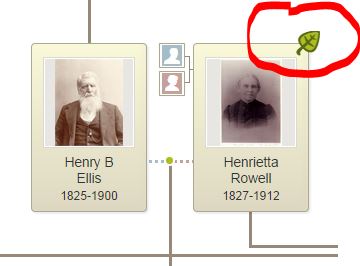
Are you getting the most out of your Ancestry.com shaky leaf hints? Check out this video on YouTube–then keep reading!
In a nutshell: look at all the hints. Then keep searching.
According to the Ancestry Insider blogger, hints are only provided for the top 10% of Ancestry records.
I asked our Genealogy Gems source at Ancestry.com about this. He did clarify that this means the most popular 10% of collections, which accounts for “a majority of the records.” But he also comments, “Hints are not meant to be an exhaustive method to flesh out all of the records for your ancestors. People should always search as well as use hints.”
After checking all the hints, I routinely find a LOT more by then searching records from an individual’s profile.
Search from the profile rather than the main search screen so some of the other data you’ve already found (like dates and relationships and locations) will be included automatically in the search parameters. I think searching from the individual profile also makes it faster to attach records to your person once you’ve found them.
Click here to hear how one woman used Ancestry.com hints to discover a tree for the biological mother who abandoned her when she was five. You’ll also learn her inspiring message about how moving past her mother on her family tree has helped her move on with her life.
by Lisa Cooke | Dec 14, 2019 | 01 What's New, Church |
Finding church marriage records may not be as easy as finding civil marriage records. I’ve invited genealogist Sunny Morton to share her best strategies for finding U.S. church marriage records from her new book How to Find Your Family History in U.S. Church Records: A Genealogist’s Guide.
Strategies for Finding U.S. Church Marriage Records
Marriage records are part of that genealogy trinity of U.S. vital records. In addition to documenting the wedding, marriage records may also serve up the equivalent of genealogical party favors, such as the birth dates, birthplaces and sometimes even parents’ names of the bride and groom.
Civil or government records are generally the first ones we turn to in the United States. These types of records are commonly referred to as “vital records,” since they document important events in a person’s life like birth, marriage, and death.
Civil marriage records can be fairly easy to find and access. However, that’s not always the case. There may be times you can’t obtain a civil marriage record. If you do find it, it may not include all the information you were hoping for. And sometimes you’d just like to find more corroborating evidence or additional clues about their lives. That’s when it’s a good idea to turn to church marriage records.
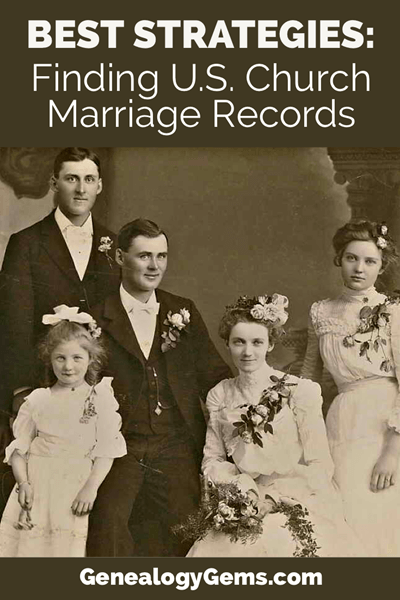
Though not all of our U.S. ancestors were married in a church or by a member of the clergy, many of them were, so church marriage records may exist.
In general, finding U.S. church records is a two-step process:
1. identify the right church
2. then find its records.
However, this may actually involve a few additional steps.
I’m going to share with you the steps and strategies of this process from my new book How to Find Your Family History in U.S. Church Records: A Genealogist’s Guide. Along the way we’ll see how they apply to a real genealogy case that resulted in success.
Step 1: Identify the Church of Your Ancestor
Identifying the church in which an ancestor married is key to locating any surviving record of it.
Let me give you the first and most important tip: the answer may be sitting under your nose.
What do I mean by that? Start by looking carefully back through other records you already have about the bride or groom. These types of records include obituaries, oral histories, county histories, tombstones, etc. Do they mention a church affiliation?
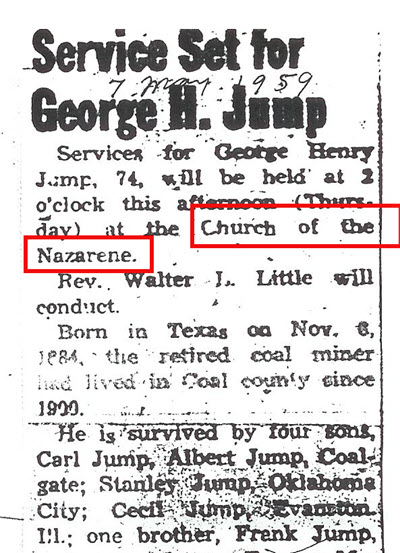
Example for Lisa’s family history
Even if they don’t mention a church, perhaps one of these records can give you a clue.
For example, let’s say the husband’s obituary mentions his lifelong religious affiliation, like Methodist or Catholic or Baptist, but not the name of the local congregation. My book offers several detailed strategies for tracking down the church name, but here’s one of the most helpful: Look at city directories, histories or maps from that time period to identify nearby churches of that denomination. Keep in mind that before the age of the automobile, people couldn’t travel far to attend church.
Let’s say you find both Irish and German Catholic parishes in the area. Based on what you already know about your family, with which did they likely affiliate?
If you’ve got the civil marriage record, look at the name of the officiator. Do you see a title hinting that this was a minister, such as “Rev” (short for Reverend)? (As an FYI, the initials “J.P.” stand for Justice of the Peace, a civil office.)
Occasionally you may even see the denomination written right in the record, as it is in the Colorado civil marriage record of Mike Fox and Mary Eiarrman:

Colorado civil marriage record of Mike Fox and Mary Eiarrman
Most marriage certificates don’t state a minister’s affiliation but searching with Google may be able to help you with that.
For example, the Indiana marriage certificate for another ancestral couple of mine identifies the officiator as “S.B. Falkenberg, Minister.” Googling that name, along with the keywords church and Indiana, led me to online books that identified him as a Methodist.
Additional digging revealed that “Somers B. Falkenburg”—probably the same guy—was specifically assigned to the Rushville Circuit of the Southeast Indiana Conference of the Methodist Episcopal Church in 1860. This was around the time and place I’m looking for that 1861 marriage record. (Learn to do this kind of digging yourself from my book. See Chapter 14 Methodist.)
Step 2: Find Where the Church Records are Located
Once you’ve identified the church, it’s time to search for congregational records that may document the marriage.
Your strategy may vary, depending on the denomination, the time and the place. Again, my book can help you: there’s a chapter with general strategies for finding church records and there are specific chapters on various denominations. Here are some get-started strategies.
Googling the Church
Find out whether the church still exists by googling the church name and location or using the online congregational locator tools I mention in the various denominational chapters.
If the church still exists, you’ll likely find a website, Facebook page, or other contact information. Reach out to their office and ask about their old records.
If you can’t find the church online, it may have closed, merged with another church, or been renamed.
Contact the Church Organization
You might turn to regional church offices or archives, such as those of a Catholic diocese or Methodist conference, to see whether they can tell you anything about that church or its records.
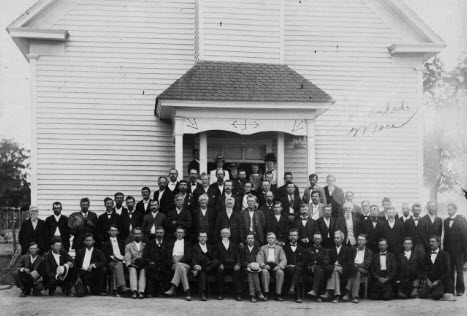
Each denomination has a different organizational structure. (See the 12 different denominational chapters in Part 2 of my book.)
An Example Search

Searching for church directories
Remember that 1889 civil marriage record for Mike Fox and Mary Eiarrman I showed you previously? Let’s take a look at the process I used to find their church marriage record.
Since the civil marriage record told me that the officiator Godfrey Raeber was a Catholic priest, I turned to the annual Catholic Directory for that year to see what parish (local congregation) he was assigned to.
I googled catholic directory 1889 and found that year’s edition online at HathiTrust Digital Archive.
Keyword-searching within the directory for Raeber didn’t bring up any results, but I didn’t stop there. I paged through it until I found the listing for the diocese of Denver (it is now an Archdiocese).
I found the priest listed at St. Ann’s, but his surname was spelled a little differently, which is why I couldn’t find him with that keyword search:

Immediately, I googled St. Ann’s Catholic Church in Denver, Colorado. Nothing came up. So, I googled Denver Catholic diocese archive and found the archdiocesan archivist’s contact information. I called him and asked what he could tell me about St. Ann’s parish and its records. The parish had closed, he said, and he had the records right there. What did I need?
Hooray! I mailed him a check and emailed him the specifics of my request. He sent me back a copy of Mike and Mary’s entry line in the marriage register:
In case you can’t read it easily, the entry references their marriage on the 28th (the month and year, in preceding columns, are “ditto-marked” the same as the entry above it, which I can’t see, but I have the date already from the civil marriage record). Then Mike Fox’s name appears, age 23, “1” for his first marriage, Denver residence, son of Martin & Francis, born in Germany.


Similar information appears for Mary, the bride, though her surname is mostly illegible. These details (age, parents’ names, birthplace) were what I hoped to learn when I originally ordered the civil marriage record—but it’s not there. Only by taking the extra steps to find the church marriage record did I uncover these additional details.
I’m still looking for a Methodist record of that marriage recorded by S.B. Falkenberg. I’m guessing his was a traveling assignment covering many small towns, which means his own personal log book may have been the only place he would have created a record, if indeed he did. The records of itinerant ministers are not easy to find.
The Search for Church Marriage Records Can Lead to More Gems
It’s true that you won’t always find church records of ancestors’ marriages or other life events such as births, baptisms, deaths or burials.
Sometimes the records weren’t created; for example, Baptists didn’t generally record marriages, as they weren’t considered a religious rite.
Or perhaps membership records have been destroyed or lost.
Occasionally, you’ll track down the records only to find they aren’t accessible to researchers. That’s sometimes true for Catholic sacramental records, which are confidential—though many church or archive offices will release copies or transcriptions of older records.
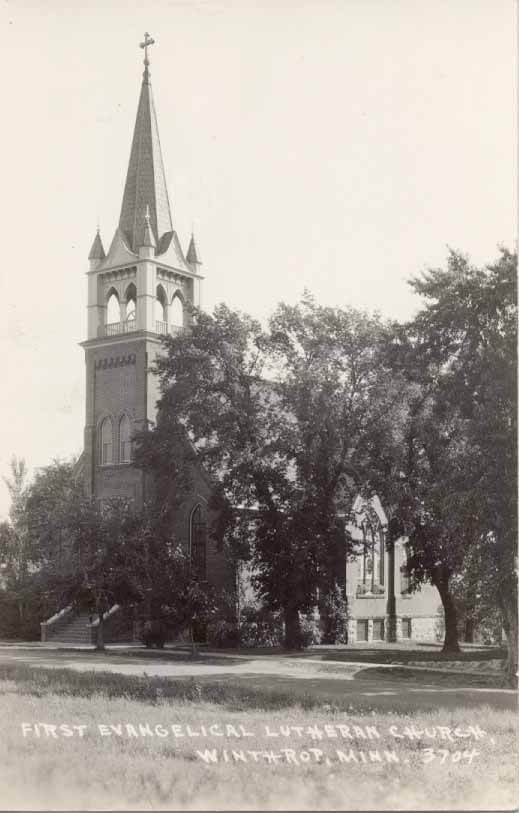
But while following the process for church records, you may discover other gems that can add color to your family history stories.
For example, when I was looking for Catholic parish records in Olyphant, Pennsylvania, I found a short history of the church. It described the devotion of its earliest members, who raised the funds to erect their building and even helped dig its foundations. Though I can’t prove it, I have reason to believe this family was part of that devoted group.
Other times, you may find photos, directories, reminiscences or other records that give you a glimpse of your ancestors’ church community life.
A Genealogist’s Guide to Finding Church Records
While the 2-step process for finding church marriage records is straight-forward, each case requires unique resources. In How to Find Your Family History in U.S. Church Records: A Genealogist’s Guide which I wrote with Harold Henderson, CG lays out a plethora of specific resources for the major Christian denominations in the U.S. before 1900:
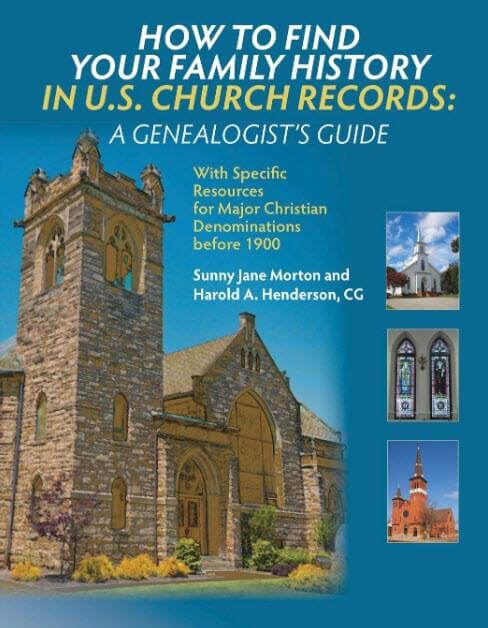 • Amish,
• Amish,
• Anglican,
• Baptist,
• Congregational,
• Dutch Reformed,
• Latter-day Saint,
• Lutheran,
• Mennonite,
• Methodist,
• Quaker,
• Presbyterian,
• Roman Catholic,
• and various German churches.
More than 30 archivists, historians, and genealogical experts in specific faith traditions have contributed their knowledge to the book.
Church records won’t always be your genealogical salvation, but every so often—hallelujah!—they will prove to be your saving grace.
About the Author
Sunny Morton (along with Harold A. Henderson, CG) is the author of the books How to Find Your Family History in U.S. Church Records: A Genealogist’s Guide, and My Life & Times: A Guided Journal for Collecting Your Stories. She is also a contributing editor to Family Tree Magazine.
(Disclosure: Genealogy Gems is a participant in the Amazon Services LLC Associates Program, an affiliate advertising program designed to provide a means for sites to earn advertising fees by advertising and linking to Amazon.com. Thank you for supporting articles like these by using our link.)
by Lisa Cooke | Apr 3, 2017 | 01 What's New, Oral History
Have you used WPA records for genealogy? Their Historical Record Surveys and local and oral histories may help you in your family history research. Existing records and locations vary widely. Here are tips to help you in your search.
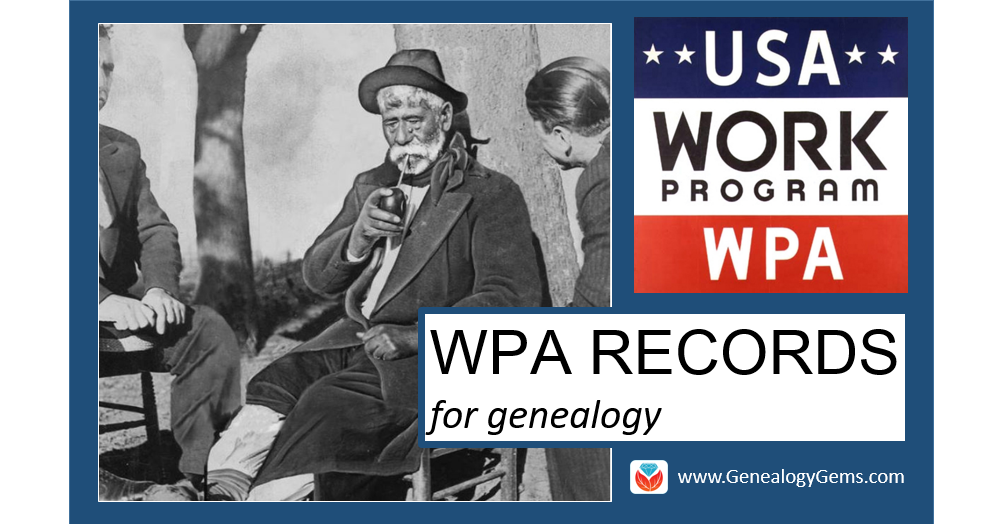
In the late 1930s and early 1940s, employees of the Works Progress Administration (WPA, also known as the Works Projects Administration) created new resources for U.S. genealogical research. It’s possible you’ve even consulted some of these without being aware of their WPA origins. After all, the projects and their formats varied. They didn’t always prominently credit the WPA and some were printed long afterward. We’re going to shine the spotlight on WPA-era local histories, oral histories and statewide Historical Record Surveys.
WPA Records for Genealogy: Local Histories
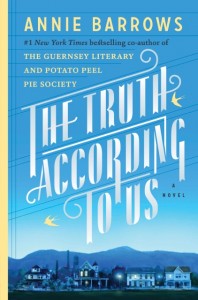 In Annie Barrows’ novel The Truth According to Us, Layla Beck heads to the small fictional town of Macedonia, West Virginia to write a local history as a WPA assignment. Drama ensues, both in Layla’s personal life and as she tries to learn local stories, which everyone reports a little differently. (We featured this book in the Genealogy Gems Book Club.)
In Annie Barrows’ novel The Truth According to Us, Layla Beck heads to the small fictional town of Macedonia, West Virginia to write a local history as a WPA assignment. Drama ensues, both in Layla’s personal life and as she tries to learn local stories, which everyone reports a little differently. (We featured this book in the Genealogy Gems Book Club.)
Actually, local histories were written as WPA projects. Their scope, topics, and formats varied, depending on the unique background and resources of each region and how active WPA workers were in each state and county. For example, WPA historical materials in Morrison County, Minnesota include “histories on townships, cities, churches, schools, businesses, the military, and miscellaneous county history topics,” which have since been collected and reprinted by the county historical society. Many historical projects included photographs, such as this one for the city of New Orleans.
WPA Records for Genealogy: Oral Histories
WPA workers also captured oral histories of individuals, too. Many were collected in American Life Histories: Manuscripts from the Federal Writers’ Project, 1936 to 1940, now online at the Library of Congress. According to the collection description, “The documents chronicle vivid life stories of Americans who lived at the turn of the century and include tales of meeting Billy the Kid, surviving the 1871 Chicago fire, pioneer journeys out West, factory work, and the immigrant experience. The documents often describe the informant’s physical appearance, family, education, income, occupation, political views, religion and mores.”
Other important WPA oral histories are narratives of former slaves and their families. You can browse an enormous collection of these online at the Library of Congress. These aren’t the ideal eyewitness accounts we wish for, as they were gathered so long after the end of slavery, from many who were young children at the time. Also, many researchers believe interviewees may not have spoken candidly, especially to white interviewers who may have known them personally.
It’s a long shot to find an ancestor mentioned by name in WPA oral histories. In some instances, pseudonyms were even used for names and places. But, you can still learn a lot from others’ descriptions of daily life and unusual events your ancestors may have experienced.
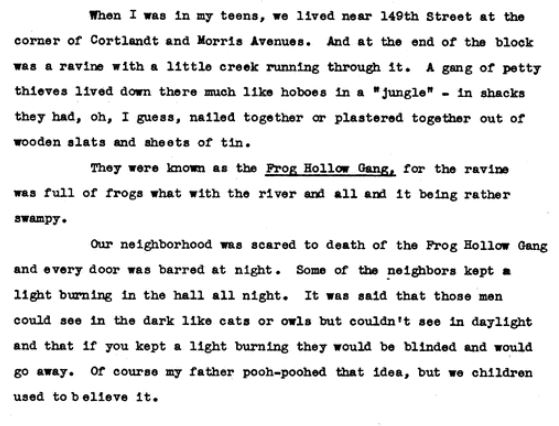
From one of the slave narratives mentioned in this article.
Historical Record Surveys
The Historical Record Surveys created by the WPA are among the most genealogically-valuable of their projects. “Under the auspices of the WPA, workers went to archives, historical societies, public and university libraries, and compiled inventories of manuscript collections,” writes Bryan Mulcahy in an online report. “They went to courthouses, town halls, offices in large cities, and vital statistics offices and inventoried records. Besides compiling indexes, they also transcribed some of the records they found.”
Today, many of their efforts still exist. They include indexes to cemeteries, newspapers, and naturalization records, as well as inventories of courthouse records, church records, and other manuscript collections in various archives or libraries. Of course, some records may have been moved or destroyed since inventories were created, but knowing what records existed around 1940 and what they were called may help you locate surviving collections. Some indexes, such as those of cemetery tombstone inscriptions, may actually be more valuable since they captured information from tombstones that may no longer exist or be legible.
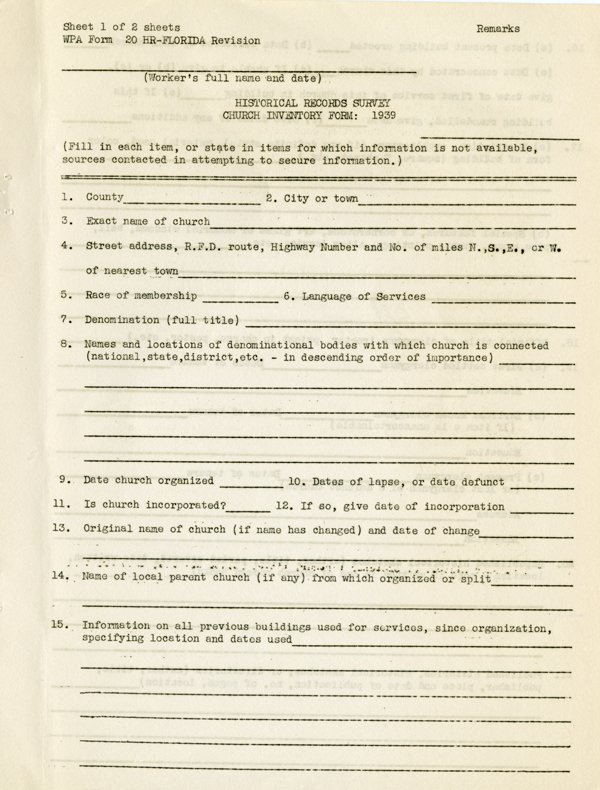
A blank WPA Historical Records Survey church records inventory form. Image courtesy of the State Archives of Florida. Click this image to find it online at Florida Memory.
One great example is the Historical Records Survey for the state of Oregon, described as “the most comprehensive documentary project of Oregon history and related records of its time.” It includes historical essays, document transcriptions, interviews, research notes, photographs, pamphlets and more. According to its collection description, “The territorial and pioneer periods of the mid-to-late nineteenth century receive the greatest attention, with an emphasis on the growth of state government and infrastructure, business and agriculture, transportation, education, biography, and relations between social groups. Native Americans figure prominently in this collection.”
Finding WPA Records for Genealogy Online
Some WPA projects were carried out on a federal level and others by state agencies. They were never centrally published or collected. Today, surviving original files and published volumes are scattered across the country. Some can be found in the National Archives, many in state libraries or societies, and many more available at local repositories.
A Google search such as historical records surveys and the name of the state and/or county is a great way to start your search for WPA records for genealogy research. Some results will lead right to the kinds of resources you want, such as this guide to WPA records in archives in the Pacific Northwest. Others, such as this one for the Iowa Historical Records Survey published in The American Archivist, are mostly a history of the effort. However, they do contain several useful bibliographic citations to records that were created. Add the name of the county to your search and you may find more targeted results, such as this library catalog entry for the inventory of the Jasper County archives. Click here to learn more about Google searches for genealogy records you want to find.
Remember, though, that many WPA publications and collections aren’t identified as such. Don’t fixate on needing to find WPA listed in the title. Just concentrate your efforts on finding the local and oral histories, photos, historical record indexes and inventories, and other resources that may be out there. When you find one created during the Great Depression, you’ll know it may have been done by the WPA.
 Love what you’re reading and want to learn more? Go deeper into genealogy “gems” like these in Lisa Louise Cooke’s Genealogy Gems Podcasts. Lisa produces a free internationally-renowned monthly podcast that’s had over 2.5 million downloads! Additionally, Genealogy Gems Premium website members also have access to her full archive of monthly Premium podcast epidodes: check out a full description of these here including Episode 2 on WPA records for genealogy.
Love what you’re reading and want to learn more? Go deeper into genealogy “gems” like these in Lisa Louise Cooke’s Genealogy Gems Podcasts. Lisa produces a free internationally-renowned monthly podcast that’s had over 2.5 million downloads! Additionally, Genealogy Gems Premium website members also have access to her full archive of monthly Premium podcast epidodes: check out a full description of these here including Episode 2 on WPA records for genealogy.
by Lisa Cooke | Apr 15, 2014 | 01 What's New, Beginner, Family History Podcast, Newspaper

Listen to the Family History: Genealogy Made Easy podcast by Lisa Louise Cooke. It’s a great series for learning the research ropes and well as refreshing your skills.
Family History: Genealogy Made Easy Podcast
with Lisa Louise Cooke
Republished April 15, 2014
https://lisalouisecooke.com/familyhistorypodcast/audio/fh27.mp3
Download the Show Notes for this Episode
Welcome to this step-by-step series for beginning genealogists—and more experienced ones who want to brush up or learn something new. I first ran this series in 2008-09. So many people have asked about it, I’m bringing it back in weekly segments.
Episode 27: Find Your Family History in Newspapers, Part 1
Newspapers offer such a unique perspective on history in general, and our ancestors specifically. You can find everything from birth, marriage and death announcements, to school and club event, crime stories, land transactions, sports activities and just about any other activity that your ancestors were part of that made the news. So let’s get started and “Read all about it!”
In this episode, you’ll hear from Jane Knowles Lindsey at the California Genealogical Society. She is currently the president there and often teaches on this subject. Our conversation on newspaper research continues in next week’s episode!
Here are some take-away thoughts from this episode, along with some updates:
- Determine which newspapers existed for your ancestor’s hometown and time period. Look for ethnic and neighborhood papers, too. The most comprehensive U.S. newspaper directory is at Chronicling America. This site does let you search by language, ethnic background, labor group and more.
- Look for these newspapers at digitized newspaper sites, starting with the free ones. In the U.S., this means starting with Chronicling America and state digital newspaper project sites (search on the state name and “digital newspapers”). These sites came out of the government digitizing program mentioned in the show.
- Digitized newspaper searching is done with OCR (optical character recognition), which doesn’t pick up everything in tough-to-read historical print. Try searching with different spellings, a first name in a particular timeframe, or other people or terms that may have been mentioned.
- Ancestry has put lots of newspapers on their website—but not everything, and for only limited time periods. Notice what time period is covered for a specific newspaper. Ancestry has since launched Newspapers.com.
- If you’ve found the name of a newspaper that probably covered your family, but you haven’t found it digitized, search the name of the newspaper in your favorite web browsers. Most newspapers are on microfilm somewhere and web directories will likely list holdings. Also, some newspapers have also been indexed on USGenWeb or other sites.
- State archives and libraries are often a great resource for newspapers. Local libraries may have unique clippings files or scrapbooks.
- Several websites and databases now focus on obituary content. You can target a search for these.
I loved this topic so much I ended up writing a book on it! How to Find Your Family History in Newspapers walks you through the process of finding and researching old newspapers. You’ll find step-by-step instructions, worksheets and checklists, tons of free online resources, websites worth paying for, location-based newspaper websites and a case study that shows you how it’s done.
6 Top Newspaper Research Resources
Some of the digital newspaper collections mentioned in the episode are available by library subscription, like The Early American Newspapers collection the and 19th century Newspaper Collection from The Gale Group. Check with your local library.
GenealogyBank
Godfrey Memorial Library
New England Historic Genealogical Society (by subscription only)
Newspapers.com
Ancestry.com
British Newspaper Archive
Small Town Papers
USGenWeb
by Lisa Cooke | Aug 31, 2011 | Census, Research Skills
Genealogy records are about to expand online. It’s still about 9 months away, but in the time it takes to bring a new descendant into the world the National Archives will be delivering the 1940 US Population Schedules to the public. There are a couple of guys who have been on the forefront of this event: none other than Steve Morse and Joel Weintraub. (You’ll remember hearing from Joel from his past appearance on the Genealogy Gems Premium Podcast.)
Of course family historians are chomping at the bit to dig into the 1940 census even though there won’t be an index when it’s first released. However, the guys have put out a press release about what you can do now to get ready to search:
“It will not be name indexed, so it will be necessary to do an address search in order to find families. Address searching involves knowing the ED (enumeration district) in which the address is located.. The National Archives (NARA) earlier this year indicated they had plans to make available in 2011 the 1940 ED maps of cities and counties, and ED descriptions, but their recent move to consider having a 3rd party host all the images may have appreciably set back this timetable.
The only website that currently has location tools for the 1940 census is the Steve Morse One Step site. There are several such tools there, and it could be overwhelming to figure out which tool to use when. There is a tutorial that attempts to clarify it and an extensive FAQ.
We are announcing the opening of another educational utility to help people learn about the different 1940 locational search tools on the One Step site, and information about the 1940 census itself. It is in the form of a quiz, and should help many, many genealogists quickly learn how to search an unindexed census by location. The new utility is called “How to Access the 1940 Census in One Step“. Not only is it informative, we hope it is entertaining.”
Entertaining it is – at least to those of us passionate about family history! Now you can get started preparing to get the most out of the 1940 population schedules right away.
There’s another way to prep for the big release. Learn more about the 1940 enumeration process by watching the National Archives YouTube channel’s four short videos created by the US Census Bureau prior to 1940. These films were used to train enumerators on their general duties and responsibilities, as well as the correct procedures for filling out the 1940 census.

Though family historian tend to focus on the population schedule, there were several different schedules created and the films describe the main ones including the population, agriculture, and housing schedules. (Learn more about the various census schedules by listening to Family History: Genealogy Made Easy Episode 10 featuring Curt Witcher.)
You’ll also learn more about the background of the census and the reasons behind the questions that were asked. And it’s the reasons behind the questions that shed even more light on what the priorities were back at that time and clues as to what life was like.
The films also cover the duties of the enumerators, highlighting the three major principles they were instructed to follow: accuracy, complete coverage, and confidential answers.
You can watch the first film, The 1940 Census Introduction here and then check out the 1940 census playlist at the national Archives channel at Youtube.











 • Amish,
• Amish,






